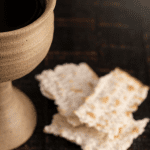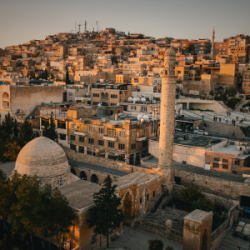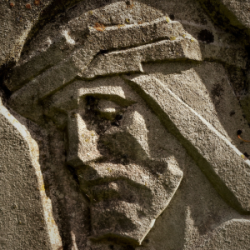Welcome readers! Please subscribe through the button on the right.

Our reading this week is from the gospel of John:
Now it was the first day of the week, Mary Magdalene came, early on while it was still dark, to the tomb and saw the stone removed from the tomb. So she ran and went to Simon Peter and to the other disciple, the one whom Jesus loved, and said to them, “They have taken the Messiah out of the tomb, and we do not know where they have laid him.” Then Peter and the other disciple came and went to the tomb. The two were running together, but the other disciple ran ahead of Peter and reached the tomb first. And bending down to see, saw the linen wrappings lying there, but he did not enter. Then Simon Peter came, following him, and went into the tomb, and he saw the linen wrapping lying there. And the facecloth that had been on Jesus’s head, not lying with the linens wrappings but rolled up separately in another place. Then the other disciple, who reached the tomb first, went in and saw and believed. Indeed they did not understand the scripture that it was necessary for Jesus to rise from the dead. Then the disciples returned once more to their homes.
Now Mary stood outside, facing the tomb, weeping. As she wept, she bent down to see in the tomb. Then she saw two angels in white sitting, one at thread and the other at the feet, where the body of Jesus had been lying. They said to her, “Woman, why do you weep?” She said to them, “Because they have taken my Savior, and I do not know where they have laid him.” Having said this, she turned around and saw Jesus standing, but she did not know that it was Jesus. Jesus said to her, “Woman, why do you weep? For whom do you look?” Thinking that he was the gardener, she said to him, “Sir, if you have carried him away, tell me where you have laid him, and I will take him away.” Jesus said to her, “Mary.” She turned and said to him in Aramaic, “Rabboni!” (Which means Teacher.) Jesus said to her, “Do not hold me, because I have not yet ascend to the Father. Rather go to my brothers and say to them, ‘I and ascending to my Abba and you Abba, to my God and your God.” Mary Magdalene went and announced to the disciples, “I have seen the Savior”; and she told them that he had said these things to her. (John 20:1-18, translation by Rev. Dr. Wilda Gafney, A Women’s Lectionary for the Whole Church: Year W)
This week, we are reading the resurrection narrative found in the gospel of John. This is a combined resurrection narrative developed after the early Jesus movement, and I believe there is something we can glean from this version.
One thing that is common to all the gospel narratives is the presence of women at the tomb of Jesus. In John’s version, notice that Mary uses the word “we.” Women who had the courage to go to the tomb as soon as there was daylight after the Sabbath led to the first proclamation of the resurrection. Those who showed up first got to be the first ones to share the good news. John’s version of this story encourages me to speak out when men and institutions say women can’t posses equal authority or credentials to proclaim the gospel.
Each resurrection narrative also begins in sorrow, and as John tells the story, I can imagine Jesus saying Mary’s name tenderly. I love that she mistook Jesus for a gardener: the detail grounds this version of the story in the interconnectedness with our natural world that gardeners know firsthand. I also love how Mary had to be told to let go. Wouldn’t you have held on as she did if you had just witnessed the brutal murder of someone you cared so deeply for, and now saw him alive again, standing right in front of you?
There’s a lot to unpack in John’s narrative. We’ll start that process, next.
(Read part 2)














